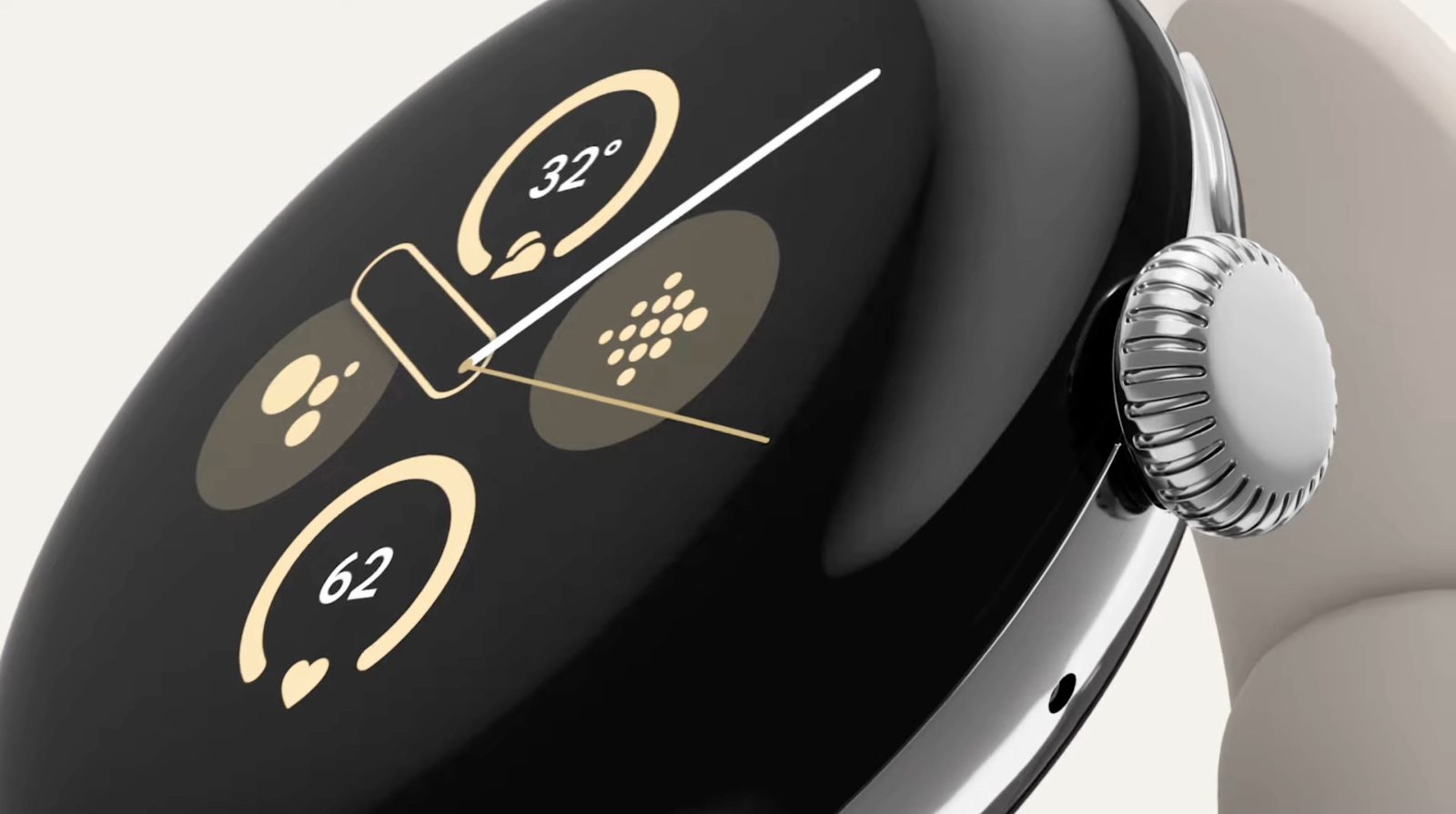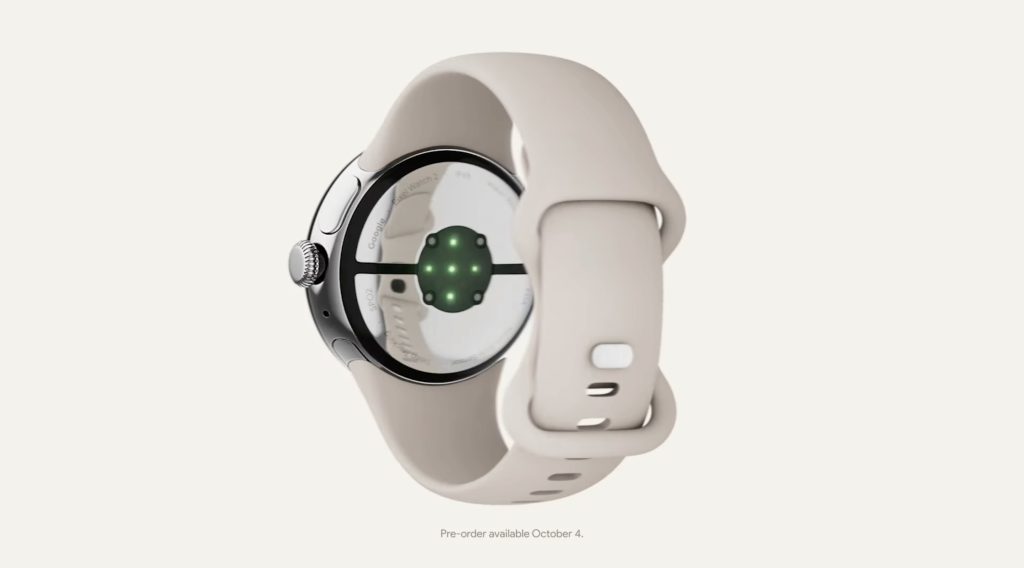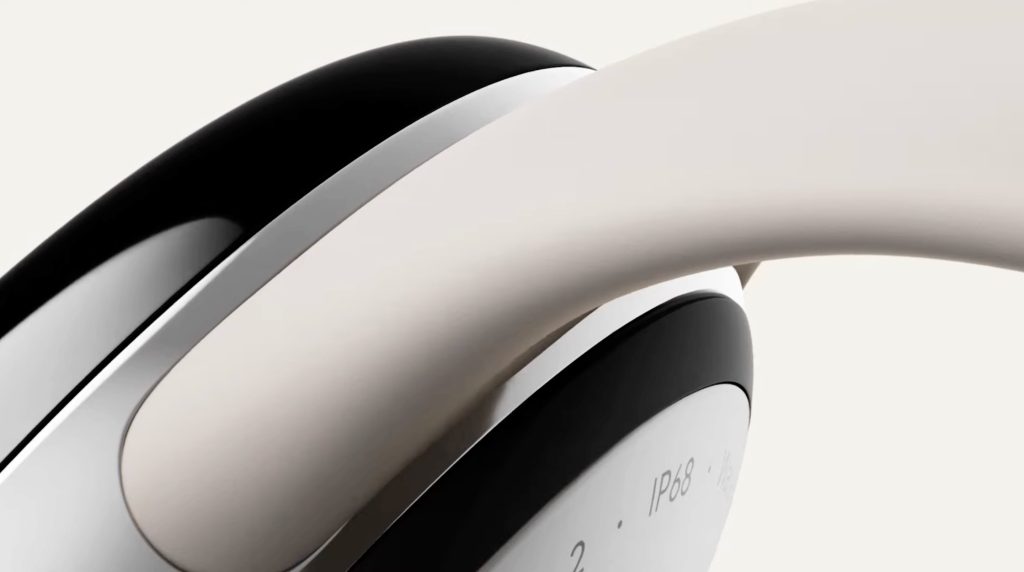
Ahead of the Pixel Watch 2’s expected October launch, 9to5Google has learned that Google’s second smartwatch will feature a thermometer and bring improvements to the wearable versions of Fitbit and Personal Safety.
Fitbit
In a way, last year’s Google Pixel Watch was the beginning of a new product line for Fitbit, one that lets health features take a backseat to put Google’s smarts and helpfulness in the forefront. Meanwhile, the Sense series remained as Fitbit’s flagship line, carrying the group’s most advanced set of sensors for measuring your health and wellness.
According to our sources, the Pixel Watch 2 will gain new capabilities that were first seen on the Fitbit Sense 2. As seen in a recent official teaser for the Pixel Watch 2, Google’s next smartwatch is set to upgrade the included sensors.

Text on the underside revealed the presence of an electrodermal activity (EDA) sensor, which we previously reported would be used for stress management and tracking. Our sources have reconfirmed that the Pixel Watch 2 will include features to help wearers manage stress.
window.adSlotsConfig = window.adSlotsConfig || [];
adSlotsConfig.push( {
slotID: ‘/1049447/Outbrain’,
slotName: ‘div-gpt-ad-outbrain-ad-586747’,
sizes: [300, 250],
slotPosition: ‘mid_article’
} );
Another Pixel Watch 2 feature coming over from the Fitbit Sense 2 is the addition of a skin temperature sensor, confirming our earlier reporting. We’re hearing that owners may be able to check their skin temperature on demand, while past readings will be accessible in the Fitbit mobile app.
This even goes beyond the Sense 2, which currently only tracks your temperature variation at night as part of a broader picture of your health.
Fitbit Sense and Fitbit Sense 2 use a dedicated sensor to estimate your skin temperature variation each night. Fitbit Charge 4, Fitbit Charge 5, Fitbit Inspire 2, Fitbit Inspire 3, Fitbit Luxe, and Fitbit Versa series surface your nightly skin temperature variation through existing sensors.
One potential use for skin temperature sensing is to help track menstrual cycles, as seen on the Galaxy Watch 5/6, but our sources couldn’t confirm whether the Pixel Watch 2 would match that capability.
Google appears to be making a broader push for body temperature readings, as it’s been repeatedly reported that the Pixel 8 Pro will include a thermometer. It’s not yet clear how these two temperature sensors will interact or if they’re even intended for similar purposes.

Additionally, our sources tell us that Fitbit’s on-watch exercise UI is getting a revamp alongside the Pixel Watch 2. Where the current design displays your current stats, like heart rate and distance, in a simple, no-frills layout, the redesign will be more cohesive with Google’s smartwatch style.
We’re hearing that the new exercise design particularly makes your current heart rate more engaging, encouraging you to reach your desired zone. Meanwhile, the other elements have been sized up to be more glanceable, similar to Google Fit’s current Wear OS design.
Personal Safety
On the Pixel Watch today, Google’s Personal Safety app can detect when you’ve taken a hard fall and call for help if needed. There’s also an Emergency SOS feature, accessible by quickly pressing the crown five times. With the launch of the Pixel Watch 2, we’re hearing that Personal Safety is set to get a significant upgrade with three new features.
First, the Pixel Watch 2 will work in tandem with the car crash detection feature available on Pixel phones. When a crash has been detected by your phone, your core medical information will be displayed on your watch so that emergency responders can easily find it.

Meanwhile, the wearable version of Personal Safety will also gain full support for Emergency Sharing, which allows you to share your location with trusted emergency contacts. Importantly, Emergency Sharing will work even without your phone if your Pixel Watch 2 is equipped with LTE and has an active data plan.
Similarly, we’re hearing that you’ll be able to use the Pixel Watch 2 to schedule a Safety Check, matching the Pixel phone feature. On phones today, once your set countdown expires, Personal Safety attempts to verify that you’re okay, and if you don’t respond, your emergency contacts will be notified of your location. As you’d expect, using Safety Check on your watch also requires LTE and a data plan.
Translation
In the early days of Wear OS, Google offered a simple Google Translate app that enabled some quick translations right from your wrist. However, the company eventually discontinued the app, and it became fully unavailable for modern watches.
Our sources tell us that Google is preparing to reintroduce translation features for Wear OS as part of the Pixel Watch 2 launch, but this likely won’t take the form of a dedicated Google Translate app. Instead, we’re hearing that the Google Assistant’s interpreter mode will handle translations just like it does on phones, tablets, and Nest hardware.
Curiously, in our testing, interpreter mode seems to already be live on the first-generation Pixel Watch, though none of Google’s support documentation currently mentions support for smartwatches. As expected, it seamlessly translates conversations to and from your default language and a second language of your choosing, playing the translations aloud.

These new features, paired with a significant internal hardware upgrade, point to the Pixel Watch 2 being a massive improvement over last year’s watch. A common thread among many of these features is their ability to let the Pixel Watch 2 work independently so that you can leave your phone behind more often. We’ll be intrigued to see how heavily Google pushes that narrative when it fully unveils the Pixel Watch 2 on October 4.
Abner Li & Dylan Roussel contributed to this article.
FTC: We use income earning auto affiliate links. More.
<hr>
<p><strong>🚨 Disclaimer(Because Lawyers Exist):</strong> This article was scraped, gathered, and possibly abducted from <a href=”[source_url]” target=”_blank”>[source_url]</a>.
Any hot takes, controversial opinions, or mind-blowing insights belong to them, not us.
So if you disagree, kindly direct your complaints to the source—or scream into the void, whichever works.</p>
<p><strong>🤖 AI Shenanigans:</strong> Some parts of this article were optimized, polished, and possibly rewritten by **our AI overlord** to make it more readable, engaging, and SEO-friendly.
So, if it sounds smarter than usual, thank the machine. If it sounds weird… well, also blame the machine.</p>
<p><strong>💸 Affiliate Hustle:</strong> This post may contain affiliate links (Amazon, BestBuy, or some other capitalist empires).
If you buy something through these links, we might make a few bucks—at no extra cost to you!
Consider it a **”digital high-five”** for bringing you this awesome content. <a href=”https://your-affiliate-link.com”>Check out our recommended deals here.</a></p>
<p>🔥 Stay informed, stay entertained, and don’t sue us. Haxx! 🎉</p>

Top comment by TurboFool
Liked by 14 people
If the new sensors finally enable SmartWake, I’ll upgrade. I love my first-gen Pixel Watch, but that’s the biggest feature I’m missing. That, plus maybe better battery, could get me to jump after only a year. Otherwise I’m still quite happy.
View all comments